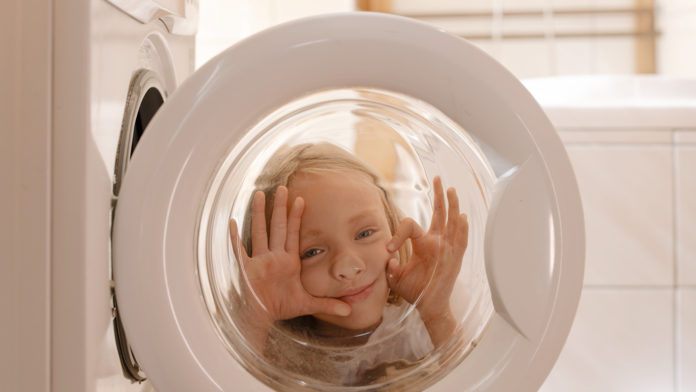Every person who has ever taken clothes out of a dryer knows how much lint can come off a load of laundry. The lint trap is a filter that catches microfibres before they can shoot out into the dryer vent and clog it up.
But without a similar filter on the washer, each load of laundry can still flush millions of microfibres away with the wash water. The fabrics that make up our clothes, bedding, and other washables shed these tiny fibres with the turbulent friction that helps get them clean.
A study by the University of Toronto and non-profit Georgian Bay Forever was the first to show that installing filters on washing machines in real homes can be an effective solution on a community level.
That’s great news for the environment, because synthetic fabrics and blends that contain materials like polyester or nylon shed microplastics. These tiny pieces of plastic can escape wastewater treatment and get into our waterways, making their way into the food chain and eventually into our bodies.
Scientists estimate that a third of the microplastic pollution in our oceans comes from synthetic microfibres. That makes them the largest known contributor to marine microplastics.
And even microfibres that are natural, like cotton or linen, take time to degrade. They are often loaded with chemicals and dyes from the manufacturing process, and they can attract and concentrate chemical pollutants from their environments.
Making the problem worse, once microfibres from the laundry goes down the drain, it gets massively more difficult to get them back out. Diluted with huge volumes of other sources of water, even an effective wastewater treatment process will miss a significant number.
But a filter connected to the washer’s outlet can help capture shed microfibres at the source. Adding a laundry filter to a washing machine costs about $200 and blocks about 90 percent of microfibres from reaching the drain.
Lead author Lisa Erdle helped install 97 of them in Ontario’s Parry Sound, representing about 10 percent of households in the town. The team took samples from Parry Sound’s water treatment plant before and after installation, and they were surprised to find an even greater than 10 percent decrease in microfibres in the community’s wastewater. Although unexpected, it’s possible that participating households spread the word about the study, leading to greater community awareness of the problem and changes in laundering habits.
These promising results can have global impact, as policymakers from all over the world are looking for evidence that laundry filtration could cut down a major contributor to the microplastic crisis. Legislation that would make these filters standard issue on all new washers would be the most straightforward way to eventually get one in every laundry room. To speed up the process, filters can also be installed on existing washers.
Seeing the volume of trapped fibres when emptying the filter can also change consumer behaviour. Before clothes even reach the laundry, there are ways to reduce microfibre shedding. Shoppers can avoid synthetic materials and look for fabrics with smooth weaves tend to shed less than fluffier fabrics like fleece. They can also avoid buying new clothes that shed more than ones that have already been washed many times, or simply wash them less often.
Reducing sources of plastic pollution is an important goal, and this simple household intervention could be a major help if we install them widely.









































